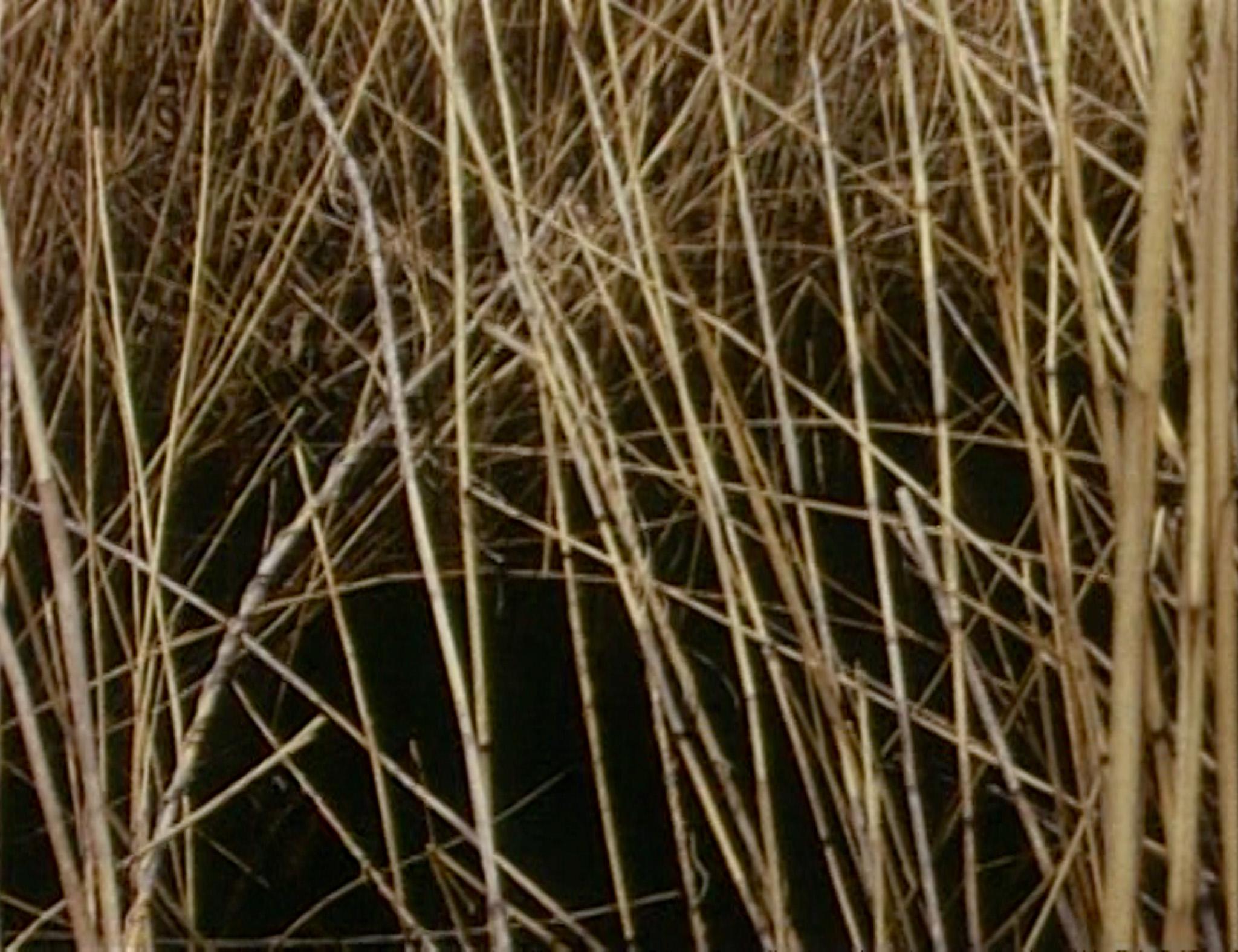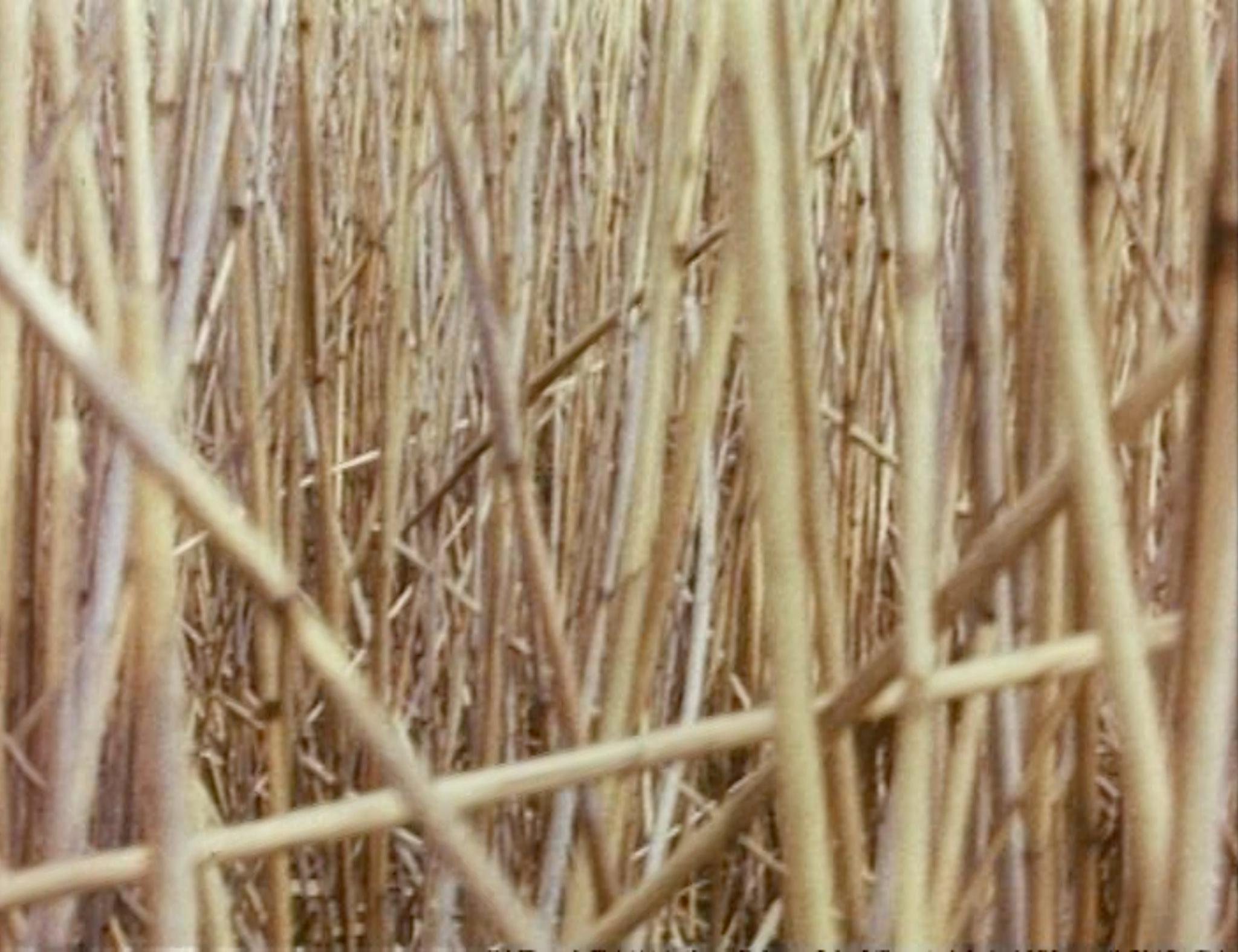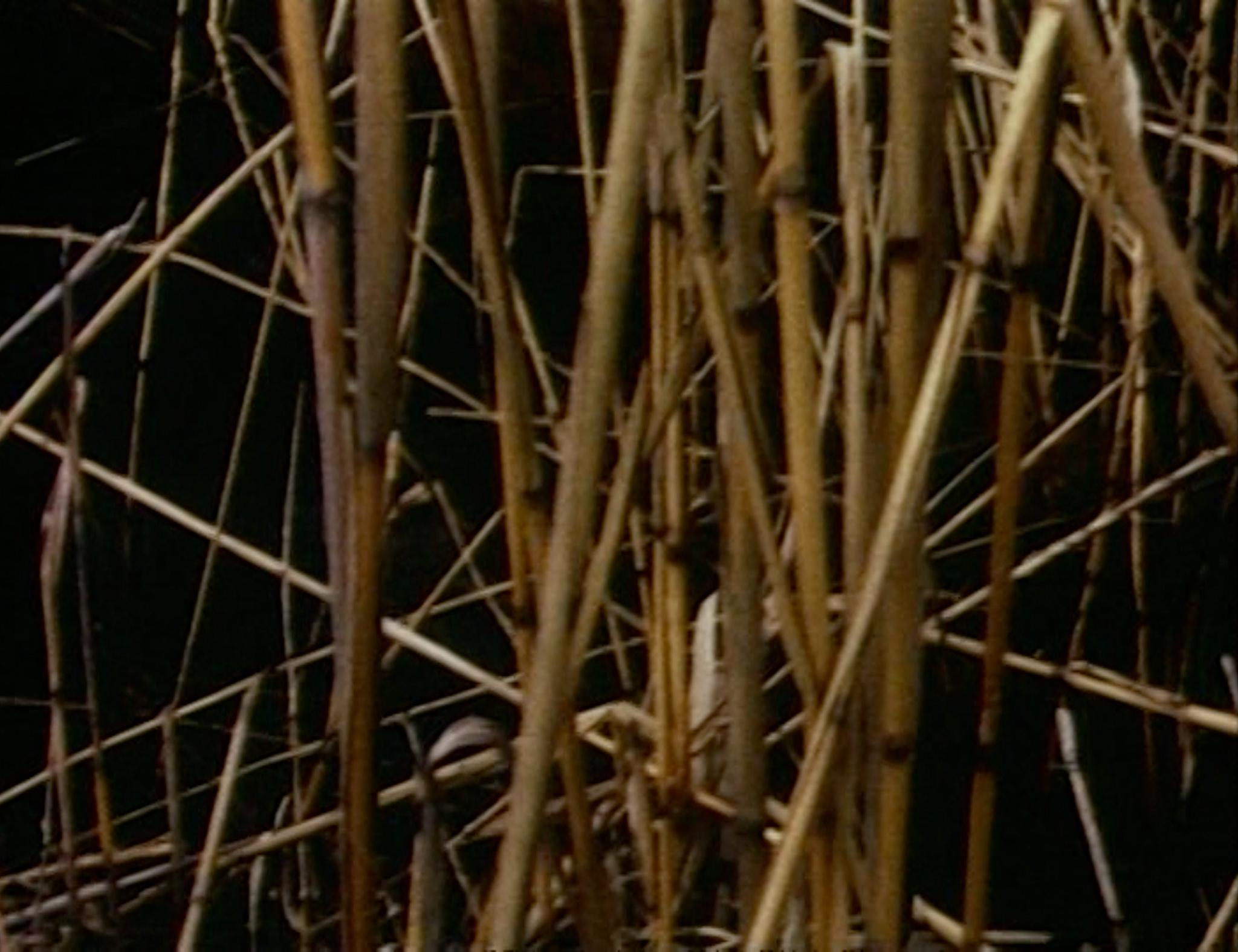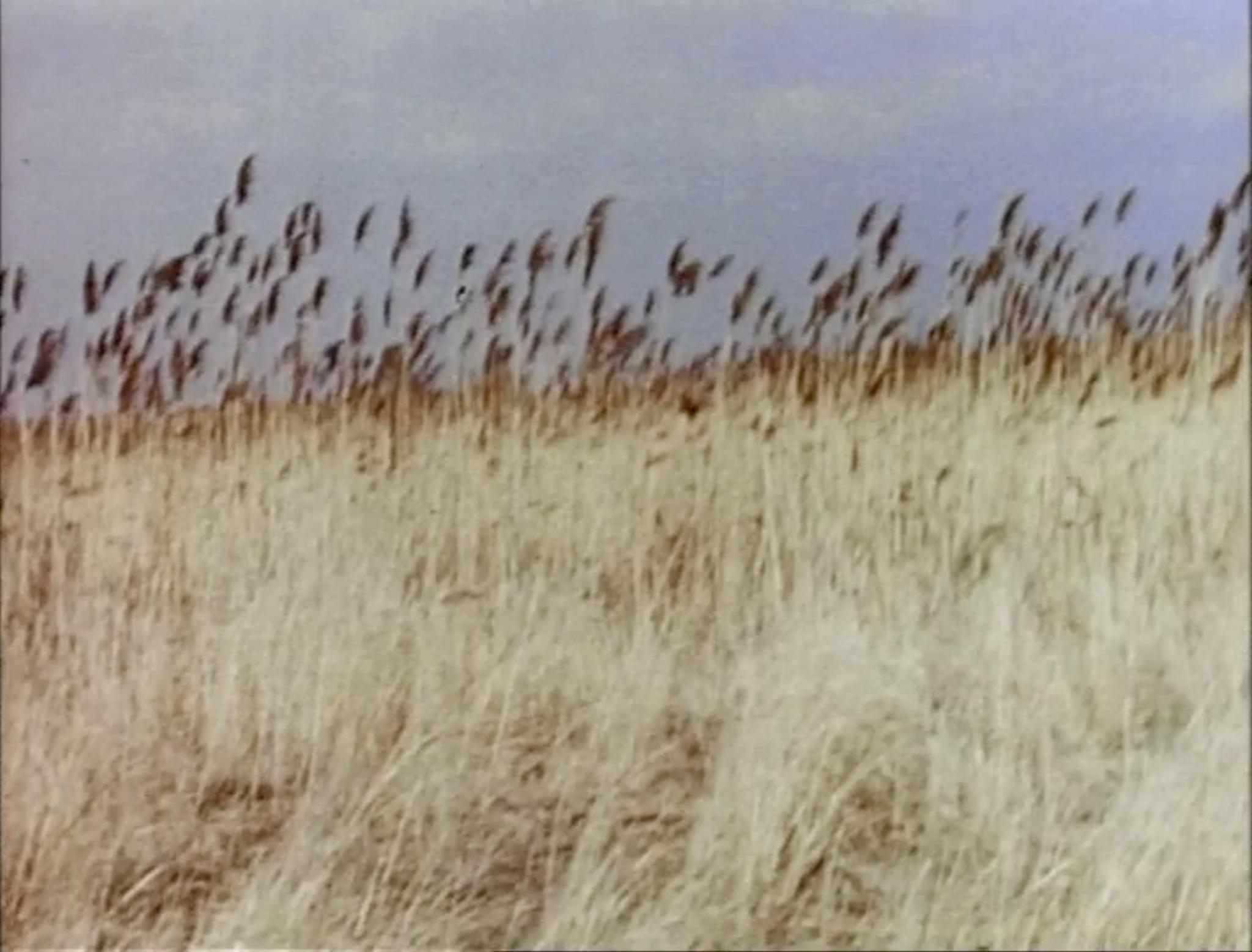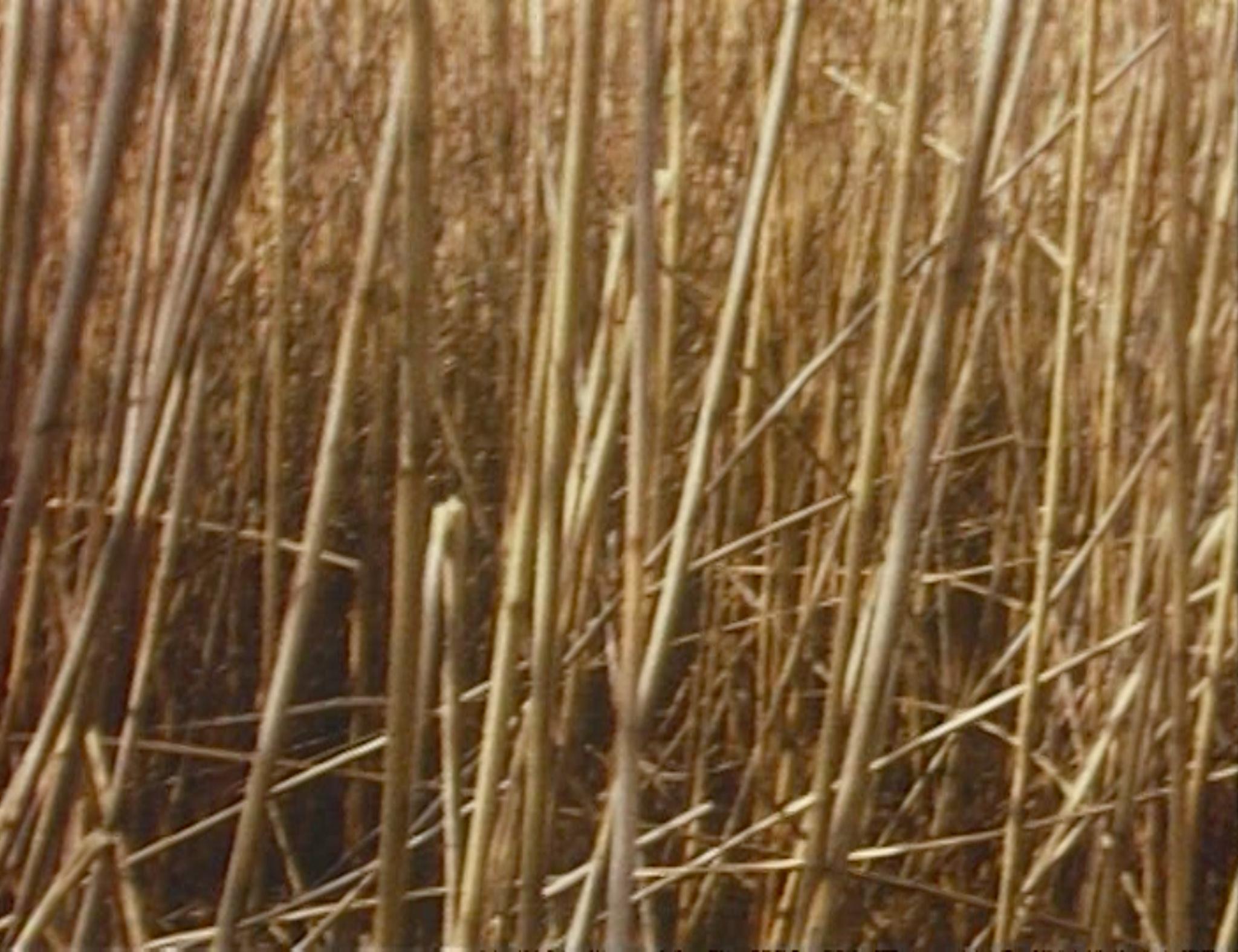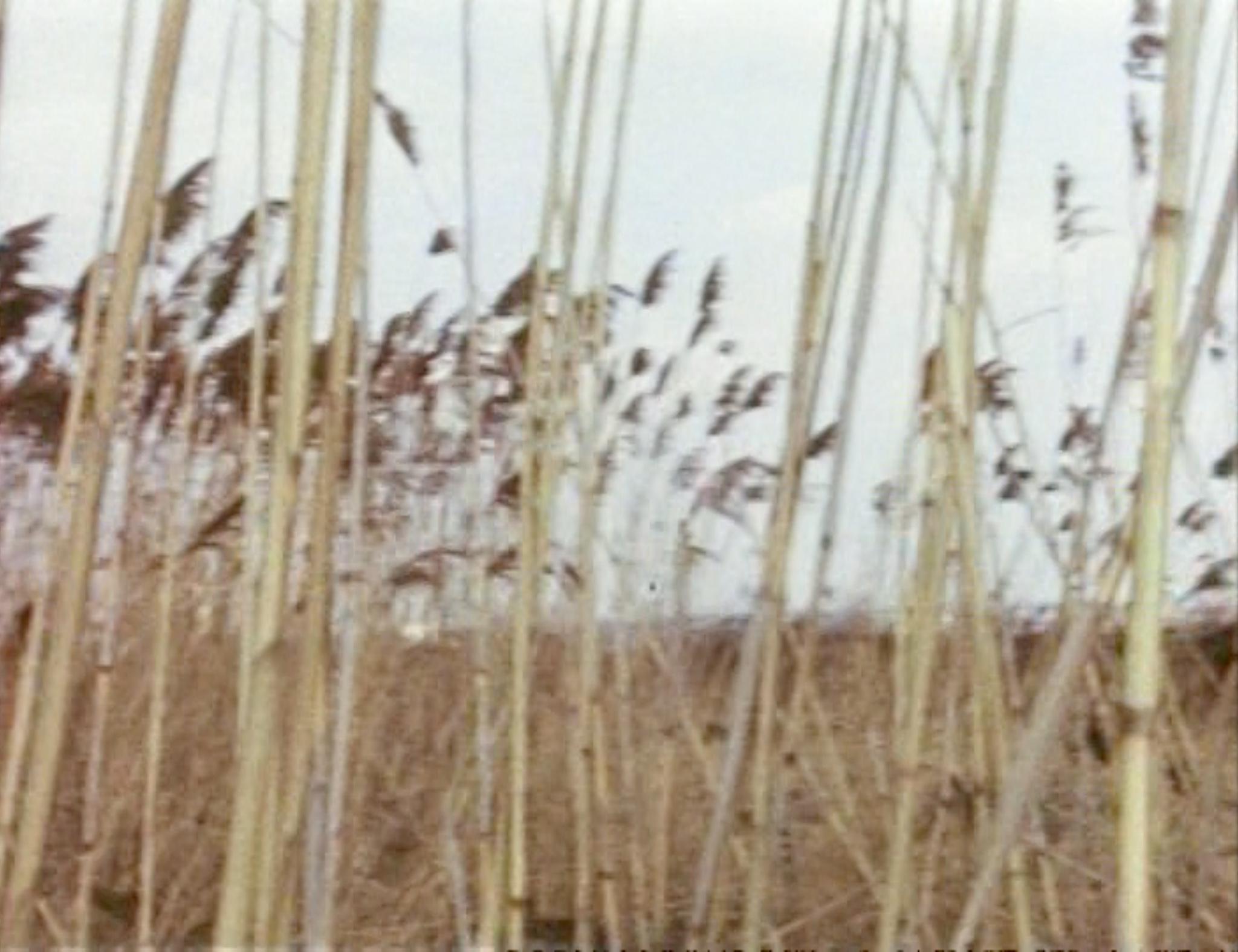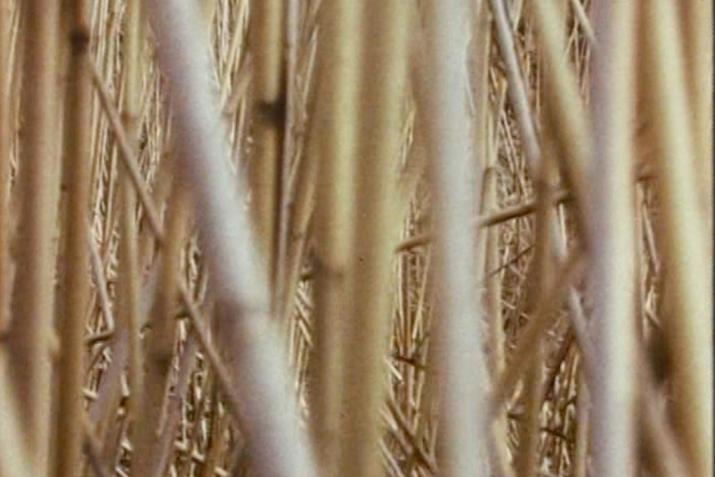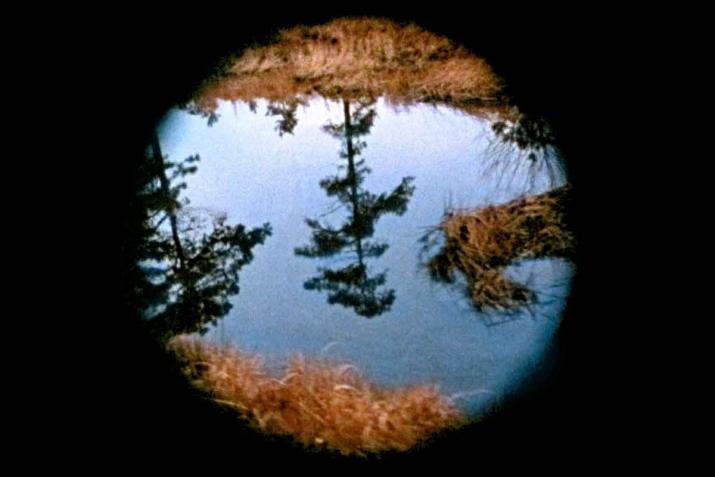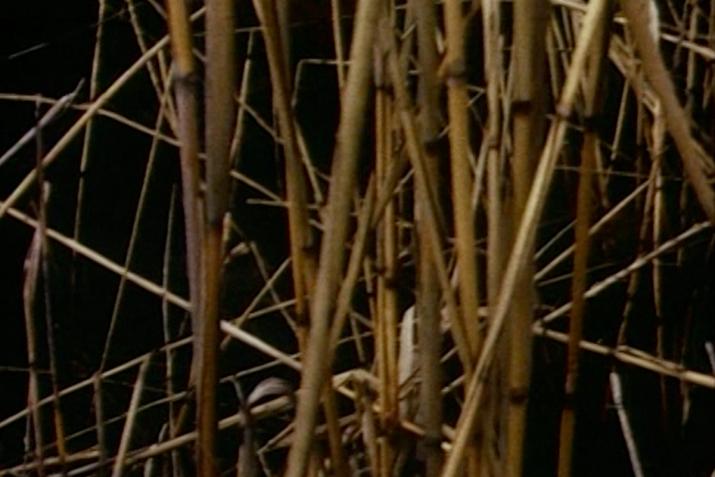
Swamp
Swamp is a collaborative artwork by Nancy Holt and Robert Smithson, shot in the swamplands of New Jersey. Both artists grew up in New Jersey and throughout their work they return to the New Jersey swamps and the Pine Barrens.
This 16mm film explores the mechanics of seeing through site, core concerns of both Holt and Smithson. Looking through the viewfinder of a Bolex camera focused in tight close-up, Holt attempts to walk through the landscape—her field of vision through the camera too narrow for steady progress. The view through the camera is overwhelmed by detail of cattails and grasses. A visceral, chaotic journey unfolds as the artists confront a dense maze of plant life, struggling with the limitations of their own perception, and for the failure of technology to stand in for vision. The visual element shows exactly what Holt sees: a mass of vegetation.
The audio comprises the sounds of the couple moving through reeds, the wind blowing, the camera clicking, and Smithson giving verbal directions as he tries to see for Holt. Throughout his writings and artworks, Smithson critiqued reliance on vision for objective knowledge, pointing to blind spots and distortions. “Just walk in a straight line” Smithson advises. “Straight into that clump. It’s OK, Nan. You’re on fairly solid ground. Straight in. Just go right in. Go straight in over that way. Turn to your right. Your right. In, into, that clump right there. Directly in. It’s okay. Go ahead.” Holt’s vision is partial and distorted as she responds to Smithson’s advice: “so much of this is out of focus.”
In an interview with the painter and writer Gregoire Muller in 1971, Smithson described Swamp as being concerned with “deliberate obstructions or calculated aimlessness.” Reflecting on Swamp some twenty years later, Holt noted that the film “deals with limitations of perception through the camera eye as Bob and I struggled through a muddy New Jersey swamp. Verbal direction cannot easily be followed. As the reeds crash against the camera lens blocking vision and forming continuously shifting patterns, confusion ensues.”
